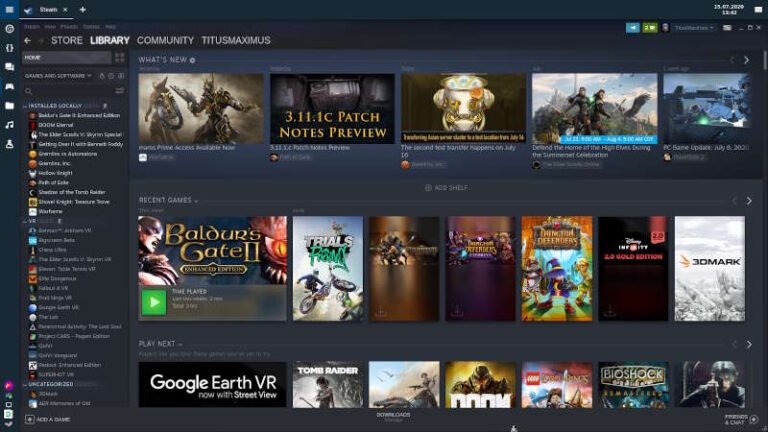PlugboxLinux is a lightweight and adaptable Linux distribution specifically designed for plug computers like SheevaPlug and GuruPlug. Originating from the Arch Linux family, it emphasizes simplicity and user-centric customization, making it an ideal choice for those who need an efficient operating system for devices with limited hardware capabilities.
Table of Contents
History and Development of PlugboxLinux
PlugboxLinux emerged as a specialized Linux distribution tailored to meet the unique requirements of plug computers, which are compact, low-power devices often used in network applications and other specialized tasks. The inception of PlugboxLinux was driven by the need for an operating system that could perform optimally within the constraints of minimal hardware resources, making it a prime choice for embedded systems and IoT devices.
Developed on the foundation of Arch Linux ARM, PlugboxLinux inherits the principles of simplicity and flexibility that Arch Linux is known for. This lineage allows PlugboxLinux to offer a streamlined and efficient environment, perfect for users who prefer a do-it-yourself approach in setting up and customizing their systems. The rolling release model of PlugboxLinux ensures that the system remains up-to-date without the need for frequent, major upgrades.
Key Features of PlugboxLinux
One of the standout features of PlugboxLinux is its lightweight nature, which ensures that the system uses only essential resources, making it fast and responsive even on older or limited hardware. This minimalistic approach not only enhances performance but also allows users to tailor the system extensively, installing only the software that is necessary for their specific use case.
Further enhancing its appeal is the use of the Pacman package manager, renowned for its speed and efficiency in handling software installations and updates. The ability to access the vast Arch User Repository (AUR) provides users with a plethora of software options, ranging from standard applications to niche tools designed for specific tasks. This makes PlugboxLinux not just versatile but also highly customizable, catering to a wide array of computing needs and preferences.
Installing PlugboxLinux: A Step-by-Step Guide
Installing PlugboxLinux is straightforward, making it accessible even for those new to Linux. The first step involves downloading the appropriate PlugboxLinux image from the official website, ensuring that it matches the architecture of the target device. This is crucial for maintaining system compatibility and performance.
Once the image is obtained, it can be written to a storage medium like an SD card or USB drive using tools like Etcher or dd. This process prepares the PlugboxLinux system for booting on the plug computer. After inserting the storage device into the plug computer, users simply power on the device to start the installation. The system’s first boot will prompt users to configure basic settings, such as network connections and system locales, paving the way for a fully operational PlugboxLinux environment.
Using PlugboxLinux: Applications and Benefits
PlugboxLinux is not only a tool for experienced developers but also serves practical applications in everyday technology setups. For instance, it’s ideal for running home servers where users can manage file storage, media servers, and personal web servers efficiently. The stability and minimal resource requirements make PlugboxLinux suitable for 24/7 operations without significant energy consumption.
Beyond home use, PlugboxLinux excels in professional and educational environments. Its robustness and adaptability make it suitable for programming and development tasks, especially in learning settings where students and educators can benefit from a customizable and controlled computing environment. Plug box Linux’s flexibility also extends to IoT applications, providing a reliable platform for running and managing smart devices.
Community and Support
The Plug box Linux community is an invaluable resource for both new and experienced users. Through forums, online documentation, and direct user support, members can find assistance with everything from basic setup to complex system customizations. This active participation not only helps in resolving technical issues but also fosters a sense of collaboration and shared knowledge among users.
Moreover, the community-driven approach of Plug box Linux encourages users to contribute back, whether through developing new features, providing feedback, or creating tutorials. This collaborative environment not only enhances the system itself but also supports users in achieving their individual and collective goals, making Plug box Linux a continuously evolving platform.
Comparing PlugboxLinux with Other Linux Distributions

When compared with other lightweight Linux distributions such as Lubuntu or Tiny Core Linux, Plug box Linux holds its own by offering a unique blend of performance and customization. While distributions like Lubuntu provide user-friendly interfaces and extensive software repositories, Plug box Linux attracts users with its minimalistic approach and the ability to extensively customize and control their computing environment.
Moreover, the rolling release model of Plug box Linux ensures that it remains on the cutting edge of software updates, unlike other distributions that may require more frequent manual upgrades. This makes Plug box Linux particularly appealing to those who need a stable yet current operating system for development, testing, or daily use.
Future Directions and Upgrades
Looking forward, Plug box Linux continues to evolve, shaped by user feedback and the dynamic nature of technology. Upcoming updates focus on enhancing system security, improving user experience, and expanding hardware compatibility. These developments promise to maintain Plug box Linux’s relevance and efficacy as a top choice among lightweight Linux distributions.
The roadmap for Plug box Linux also includes deeper integration with cloud services and IoT applications, reflecting the growing demand for interconnected devices and online data management. As Plug box Linux adapts to these changes, it remains committed to its core principles of simplicity, efficiency, and community collaboration.
Conclusion
Plug box Linux stands out in the world of Linux distributions due to its focus on efficiency, customization, and a strong community support system. Ideal for a wide range of applications—from personal computing to professional development environments—Plug box Linux offers a compelling option for those seeking a robust, lightweight operating system. Its continuous development and responsive community further ensure that Plug box Linux remains a relevant and powerful tool in the ever-evolving landscape of technology.
Read More : vc63taff.com


